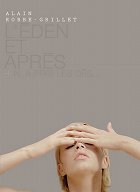Plots(1)
This film is a reworking of Robbe-Grillet’s previous film L’Eden et après, using alternate takes and re-editing that has the order of scenes to be governed by “a throw of the dice“. (MUBI)
Reviews (1)
Robbe-Grillet is instructive in many regards, especially in the explicit inclusion of a description of the creative process in one character's mouth - but there is a minor problem in this case: in 1971, the intellectual community (not only in France) was already well aware of Robbe-Grillet's artistic approach, which had been literary since the 1950s and cinematically processed since the 1960s. Apart from this fact, this film once again offers a pure Robbe-Grillet anti-causal diamond with a thousand facets, each reflecting light, logic, emotions, relationships with other scenes, or the viewer's understanding in a different way. Compared to his other films, the narrative is even looser, relying on previous meanings that the viewer can or does not need to use as a guide to new meanings. With this second level of distance (the first being Eden itself) from the monocausal story, the author almost perfectly prevents the viewer's spontaneous orientation in the film and that is what the author intends: the viewer is forced to "steal" the meaning, the aesthetic impression, the emotion, and the visual association from the film that he or she creates on their own. It may not seem like it, but even in this case, Robbe-Grillet's film is not by any means a random mixture - several elements are syntagmatically repeated and combined on different levels (verbal, visual), acquiring new meanings as they gradually travel across the film (e.g., the word "prendre" = to take).
()
